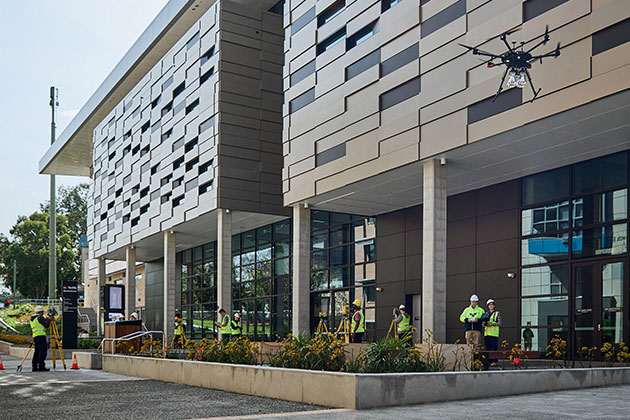- Go to homepage
- About
- Corporate
- Infrastructure strategy
TAFE NSW 20-Year Infrastructure Strategy

The TAFE NSW 20-Year Infrastructure Strategy - (2022–2042) sets a vision. It aims to meet the changing needs of students, communities and the industries that serve them.
The strategy:
- highlights the links between infrastructure
- aims to improve the student experience
- provides a roadmap for facility upgrades and changes
- aims to adapt to changing demands in education and training.
It has three key directions, each with specific outcomes. Together these respect the experience of the students and teachers, and acknowledge the importance of engaging community and serving industry.
1. Strengthen community connections
We want our campuses and surroundings to be inviting, inclusive and accessible. We want to connect our campus management with government policies and urban planning to deliver tangible benefits to communities.
Our goals:
- Ensure our assets and resources promote Sydney and regional NSW land-use plans.
- Create centres of economic activity around our campuses.
- Prioritise accessible service delivery to individuals experiencing inequity and barriers.
2. Flexible, adaptable learning spaces
We want you to be able to learn so your training should be consistent with your goals, whether it's upskilling or reskilling.
TAFE NSW’s spaces are flexible and modern and are digitally connected to promote practical learning.
Our goals:
- Ensure that learners can choose various ways to develop their skills and capabilities.
- Meet learning needs by using flexible spaces and digital learning to improve efficiency.
- Strengthen our connection with industry, education and government.
- Build a connected training network that meets the needs of local communities.
- Upgrade assets backed with financially sustainable strategies meeting digital innovation and industry needs.
3. Modern facilities for sustainable operations
We want to build facilities that prioritise sustainability. They should have a low carbon footprint and be eco-friendly.
Our goals:
- Take decisive action to enhance environmental sustainability and reduce costs.
- Improve energy efficiency and provide high-quality education in a sustainable manner.
- Optimise cost, risk and performance across all facilities.
- Allocate funds for asset renewal over the next 20 years to ensure sustainable, quality education.
- Upgrade equipment and facilities using a mix of digital and physical infrastructure.
Our Interconnected Training Network (ITN)

Connected Learning Centres (CLCs)
CLCs in regional NSW offer world-class learning experiences. They use new tech like simulations and virtual reality. Students can train efficiently, learn through practice, and access support as needed.

Institutes of Applied Technology (IATs)
IATs merge education by collaborating with universities and industry. Supported by the NSW Department of Education, they co-design courses to meet student and industry needs.

Centres of Excellence (COEs)
COEs provide advanced training by collaborating with industry and universities. They focus on workplace learning to develop the skills and knowledge expectations to satisfy national job quotas.